In our last two journeys, we’ve walked with heroes who were very much of this world. Gilgamesh, a king who built walls and raged against the finality of death. Achilles, a warrior consumed by his own personal honor. Odysseus, a man just trying to get home. Their stories, foundational as they are, are intensely human-sized, even when gods are involved. The drama plays out on the battlefields and in the palaces of men.
But what if the stage were bigger? Infinitely bigger? What if a story wasn’t just about a single hero’s journey, but about the journey of the soul itself across countless lifetimes? What if a single poem was so vast, so ambitious, that it claimed to contain every story that has ever been told and ever will be told? And what if the climax of the greatest war epic ever written wasn’t a sword fight, but a profound philosophical debate in a chariot between a terrified prince and God himself?
To find these stories, we must travel eastward, from the sun-bleached shores of the Mediterranean to a subcontinent that buzzes with a different kind of energy. A land of sacred rivers, dense forests, and snow-capped mountains that touch the heavens. Welcome to the Indian subcontinent, the birthplace of some of the most ancient, complex, and spiritually vibrant literary traditions on Earth. The ancient storytellers here had a name for their narrative world: Kathasaritsagara, which translates to “the Ocean of the Streams of Story.” It’s time to dive in.
The Sound of Reality
Our story begins not with a story, but with a sound. A sacred vibration that was believed to be the very hum of reality itself. Before there was writing in India, there were the Vedas. Composed in an ancient form of Sanskrit, the Vedas are not “books” in the way we think of them. They are a vast collection of hymns, prayers, chants, and rituals that were considered shruti, meaning “what is heard.” They were believed to be of divine origin, not composed by men but “seen” or “heard” by ancient sages, or rishis, in states of deep meditation.
For thousands of years, these texts were not written down. They were passed from teacher to student through a system of oral transmission so rigorous and so precise it’s almost impossible for us to comprehend. Every syllable, every pitch, every accent had to be memorized and recited perfectly. The belief was that the sound itself, the physical vibration of the chant, had power. It was a form of spiritual technology that, when performed correctly, helped to maintain Rta—the cosmic order of the universe. These hymns praised gods like Indra, the swaggering god of thunder and war, and Agni, the god of fire who served as a messenger between humans and the divine. They were the operating manual for keeping the universe in balance.
But as this ritualistic tradition evolved over centuries, a new movement began. A group of thinkers started to ask different kinds of questions. Instead of focusing on the external rituals to appease the gods, they started to look inward. They retreated from the cities and into the forests to meditate and debate the great existential mysteries. What is the self? What is the ultimate nature of reality? Is there a part of us that survives death? Their radical, mind-bending answers were collected in a series of texts that form the final part of the Vedas. They are called the Upanishads.
The Forest of Questions: The Upanishads
The Upanishads represent one of the most profound shifts in the history of human thought. The word itself means “to sit down near,” evoking an image of a student sitting at the feet of a master, ready to receive secret wisdom. And the wisdom they offered was an absolute bombshell.
Through intense introspection and philosophical debate, these forest sages proposed two key concepts. The first is Brahman. Brahman is the ultimate, unchanging, infinite reality that underlies the entire universe. It’s not a personal, bearded god on a throne; it’s the very fabric of existence, the cosmic source from which everything emerges and to which everything returns. It is the vast, impersonal “world soul.”
The second concept is Atman. Atman is the individual soul. It is your innermost self, the consciousness that watches your thoughts and experiences your life. It is the eternal, indestructible part of you that is separate from your body, your mind, and your ego.
And now, for the big reveal. The central, earth-shattering insight of the Upanishads, the secret whispered from teacher to student, is this: Atman is Brahman.Your individual soul is not just a part of the universal soul; it is the universal soul. The core of your being is identical to the core of the entire cosmos. One of the most famous phrases from the Upanishads is Tat tvam asi—”You are that.” The drop is the ocean; the ocean is the drop. There is no fundamental separation between you and the ultimate reality of the universe. This idea—that divinity is not somewhere “out there” but is the very essence of your own consciousness—is the philosophical bedrock upon which the great epics of India are built. It is the ultimate answer to the question “Who am I?” that will haunt the heroes of the stories to come.
The Greatest Story Ever Told (No, Seriously)
With that high-minded philosophy buzzing in our heads, let’s turn to the first of India’s two great epics. And when I say great, I am not using the word lightly. Meet the Mahabharata.
To call the Mahabharata a long poem is like calling a supernova a bright light. It is, by a massive margin, the longest epic poem in the world. At roughly 1.8 million words and 100,000 verses, it is ten times the length of The Iliad and The Odyssey combined. It is so vast that it contains within it thousands of side-stories, fables, and entire books of philosophy. The work is traditionally attributed to the sage Vyasa, who, in a wonderfully meta twist, also appears as a key character within his own narrative. There’s a famous saying about the epic: “What is found here may be found elsewhere. What is not found here will not be found anywhere.” This wasn’t just a story; it was an attempt to create a literary encyclopedia of the human condition.
But at its core, the Mahabharata is a family saga. It’s the story of a bitter dynastic struggle between two groups of cousins for the throne of the kingdom of Hastinapura. On one side, we have the heroes: the five Pandava brothers. They are led by the eldest, Yudhishthira, the very embodiment of righteousness and duty. Then there’s the mighty Bhima, a man of superhuman strength, and the heroic Arjuna, the greatest archer in the world. On the other side, we have their one hundred cousins, the Kauravas, led by the proud, jealous, and malevolent Duryodhana.This is not a simple tale of good versus evil. The “good guys” have flaws, and the “bad guys” have moments of nobility. It’s a messy, morally complex world, much like our own. And the conflict that will eventually consume their entire civilization is set in motion not on a battlefield, but at a rigged game of dice.
The Dice Game and the Disrobing
Yudhishthira, the righteous Pandava king, has one critical weakness: a passion for gambling. Duryodhana, the villainous Kaurava, knows this and invites him to a dice game, with his devious uncle Shakuni rolling the enchanted dice that can never lose. Yudhishthira, bound by the warrior code of honor that says you can never refuse a challenge, accepts.The scene is one of the most tense and tragic in all of world literature. One by one, Yudhishthira loses everything. He loses his jewels, his treasury, his kingdom. Driven by the madness of the game, he then gambles away his brothers, one by one, into slavery. Then he gambles away himself. Finally, in a last, desperate throw, he wagers the one thing he has left: their shared wife, Draupadi. And he loses.
What happens next is the point of no return. The triumphant Duryodhana orders his brother to drag Draupadi, a queen, into the middle of the royal court filled with the elders and teachers of their clan. He declares that since she is now his slave, she must be stripped of her fine clothes. It is an act of supreme public humiliation, a violation of every code of dharma, or sacred duty. As the brother begins to pull at her sari, the horrified court looks on, too cowardly to intervene. Draupadi, abandoned by her husbands and her elders, closes her eyes and prays desperately to the god Krishna, a relative and divine friend of the Pandavas.A miracle occurs. As the Kaurava brother pulls at her sari, more and more fabric magically appears. He pulls and pulls, and the pile of cloth on the floor grows into a mountain, but she remains clothed. Her honor is saved by divine grace. But the insult is unforgivable. This one horrifying act makes a catastrophic war all but inevitable. The Pandavas and Draupadi are forced into exile for thirteen years, but they all swear a terrible vengeance. The seeds of war have been sown in a moment of profound injustice.
The Jewel in the Crown: The Bhagavad Gita
For thirteen years, the Pandavas wander in exile, gathering allies and preparing for the day of reckoning. Finally, the time comes. The two massive armies, the Pandavas and the Kauravas, assemble on the sacred field of Kurukshetra. It is a terrifying sight—millions of soldiers, chariots, elephants, all ready for a war that will pit brother against brother, student against teacher.
And it is here, at the precise moment the war is about to begin, that the action freezes. The epic zooms in on a single chariot, carrying the Pandava hero Arjuna and his charioteer, who is none other than the god Krishna in human form. And here, the Mahabharata inserts its most important and famous section, a 700-verse philosophical masterpiece known as the Bhagavad Gita, or “The Song of the Lord.”Arjuna, the greatest warrior of his age, looks across the battlefield. He sees the enemy army, and he doesn’t just see enemies. He sees his cousins, the playmates of his youth. He sees his beloved grand-uncle, Bhishma. He sees his revered teacher, Drona, who taught him how to use the bow. His heart sinks. His body trembles. His legendary bow slips from his hand. He slumps down in his chariot, overcome with despair.
“Krishna,” he says, his voice filled with anguish, “I cannot do this. How can I kill my own kinsmen for the sake of a kingdom? What victory is worth this slaughter? It is better to live as a beggar than to rule a kingdom stained with the blood of my family. I will not fight.”
What follows is not a simple pep talk. Krishna doesn’t just say “Get up and fight like a man!” Instead, he delivers one of the most profound spiritual and philosophical discourses ever written. He explains to Arjuna the nature of reality, duty, and the self.First, he explains the concept of Dharma. This is a crucial, complex word. It means “duty,” “righteousness,” “moral law,” “one’s role in the cosmic order.” Krishna tells Arjuna that he is a member of the kshatriya, or warrior, class. His dharma in this situation, a righteous war against injustice, is to fight. To abandon his duty now out of personal grief or attachment would be a greater sin than the act of killing itself.
Second, he teaches Arjuna the path of Karma Yoga, or selfless action. The problem, Krishna explains, is not the action itself, but our attachment to the fruits of our action. We act with desire for a specific outcome—victory, wealth, fame—and we suffer because we fear failure. Krishna’s radical advice is to act according to your dharma, but to completely renounce any attachment to the result. “You have a right to your actions,” he says, “but never to its fruits.” Do your duty for the sake of duty alone, as an offering to the divine, without worrying about success or failure.
Finally, Krishna reminds Arjuna of the wisdom of the Upanishads. The true self, the Atman, is eternal. It cannot be killed. “Weapons do not cut it,” Krishna says, “fire does not burn it, water does not wet it, and wind does not dry it.” The body is just a set of clothes the soul puts on and discards. In killing the bodies of his relatives, he is not destroying their eternal essence.
Gradually, Arjuna’s doubt and despair dissolve. His mind becomes clear. He sees the bigger picture, his place in the cosmic order. He picks up his great bow and says, “My delusion is gone. I am ready to act according to your word.”
And then the war begins. It lasts for eighteen days and it is an apocalypse. The descriptions of the combat are brutal and devastating. By the end, the Kauravas are all dead. The Pandavas have won. But at what cost? The field of Kurukshetra is a wasteland of corpses. The victory is so complete that it feels like a total defeat. The end of the epic is deeply melancholic. Yudhishthira rules a broken kingdom before he and his brothers renounce everything and, with Draupadi, walk north towards the Himalayas, to leave the world behind. It’s a profound and sobering conclusion, a stark warning about the self-destructive nature of hatred and war.
The Path of the Prince
If the Mahabharata is a sprawling, morally grey epic that reflects the complexities and compromises of real life (loka-vritta), then India’s second great epic, the Ramayana, is its idealistic counterpart. The Ramayana, or “Rama’s Journey,” is a more focused, linear, and devotional poem. It is not about a world of flawed people trying their best, but about ideal archetypes—the perfect son, the perfect wife, the perfect brother, the perfect devotee—and its goal is to show the world the path of perfect dharma.
Its hero is Rama, the prince of Ayodhya. Rama is the model of human perfection. He is handsome, strong, brave, compassionate, and, most importantly, completely devoted to righteousness. He is also something more: he is the seventh avatar of the great god Vishnu, who has taken human form to restore order to the world. His story, traditionally composed by the poet-sage Valmiki, is one of the most beloved and influential narratives in the world.
A Prince in Exile
The story begins in the idyllic kingdom of Ayodhya. The aging king, Dasharatha, decides to name his eldest and most beloved son, Rama, as his heir. The entire city rejoices. But the king has three wives, and one of them, Kaikeyi, becomes jealous. Long ago, the king had granted her two boons, two wishes she could ask for at any time. Now, spurred on by a malicious servant, she decides to cash them in.
Her demands are devastating. First, she demands that her own son, Bharata, be crowned king instead of Rama. Second, she demands that Rama be exiled to the forest for fourteen years. The king is utterly heartbroken. He begs, he pleads, but he is bound by his word.
When Rama is told the news, his response defines his character. There is no anger, no argument, no sense of injustice. He simply accepts. His father made a promise, and his dharma as a son is to ensure that his father’s honor is upheld. He calmly agrees to go into exile. His beautiful and devoted wife, Sita, who is the model of the ideal woman, insists on going with him, declaring that her place is by her husband’s side. His fiercely loyal younger brother, Lakshmana, also refuses to leave him, choosing to share his fate in the forest. Together, the three of them leave the palace and all its comforts behind, and walk into the wilderness.
The Abduction and the Epic Quest
For years, they live a simple, ascetic life in the forest. But their peace is shattered by the arrival of a demoness who tries to seduce Rama. When she is spurned and disfigured by Lakshmana, she flees to her brother, the most powerful demon in the world: Ravana, the ten-headed king of Lanka.
Ravana, hearing of Sita’s legendary beauty, devises a plan. He sends a magical golden deer to distract Rama and Lakshmana, and while Sita is alone, he appears in the disguise of a holy man, kidnaps her, and carries her away in his flying chariot to his island fortress of Lanka.The rest of the epic is a grand quest story: Rama’s desperate search for his beloved wife. It is a journey filled with magic, monsters, and divine allies. The most important of these allies is Hanuman, the general of a great army of monkeys. Hanuman is one of the most beloved characters in all of Indian literature. He is immensely powerful—able to change his shape, lift mountains, and leap across oceans—but his defining characteristic is his unwavering devotion, his bhakti, to Rama.
In one of the most famous episodes, Hanuman takes a single, mighty leap from the southern tip of India all the way to the island of Lanka to find Sita. He finds her held captive in a garden, delivers a message of hope from Rama, and then reveals his power by burning down half the demon city before leaping back.
With Hanuman’s intelligence, Rama and his brother, aided by the monkey army, build a miraculous floating bridge across the ocean to Lanka. A colossal battle ensues, a cosmic struggle between the forces of dharma, led by Rama, and adharma, led by Ravana. In the end, Rama confronts the ten-headed demon king and, using a divine arrow, kills him, liberating Sita and the world from his tyranny.Their fourteen years of exile are over. They return to Ayodhya in triumph and Rama is finally crowned king. His reign, known as Ram Rajya, is remembered as a golden age of justice, peace, and prosperity, the very model of a perfect society.It should be a perfect happy ending. But in many versions of the epic, a later, darker chapter is included. Back in Ayodhya, a common citizen begins to spread gossip, questioning Sita’s purity after she spent a year as Ravana’s captive. The gossip spreads, threatening the moral authority of the new king. Rama, heartbroken but bound by his royal dharma—his duty to his people, which must be above even his personal feelings—makes an agonizing choice. To quell the rumors and uphold the integrity of the throne, he banishes his beloved, and now pregnant, Sita to the forest. It is a shocking and deeply tragic act that has been the subject of debate for millennia. It asks a painful question: what happens when one sacred duty conflicts with another? The decision adds a layer of profound sorrow to this otherwise idealistic tale, showing that even for a perfect man, the path of dharma can be filled with unimaginable sacrifice.
From the speculative philosophy of the Upanishads, to the messy moral ambiguity of the Mahabharata and the idealized archetypes of the Ramayana, the literature of South Asia provides a vast and profound spiritual landscape. These are not just stories to be read; they are worlds to be lived in. The Bhagavad Gita is still a daily source of guidance for millions. Rama and Sita are not just characters; they are models of conduct. And the grand narratives of these epics are retold endlessly in every medium imaginable—from village puppet shows to blockbuster television series. This is literature that breathes.
Next time, our journey takes us further east. We travel to a land where poetry was a prerequisite for political power, where philosophy was concerned with creating a harmonious social order, and where a lady of the court sat down to write what many consider to be the world’s very first novel. We’re heading to China and Japan to explore the world of “The Brush and the Sword.”
List of Episodes in the Series
The Story of Literature EP1 | The First Scribes: Tales from the Fertile Crescent
The Story of Literature EP2 | Echoes of Olympus: The Greek and Roman Foundations
The Story of Literature EP3 | The Ocean of Stories: Epics and Wisdom of South Asia
The Story of Literature EP4 | The Brush and the Sword: Poetry and Philosophy in East Asia
The Story of Literature EP6 | Forging a Continent: From Beowulf to the Enlightenment
The Story of Literature EP7 | The Soul of the Steppe: The Great Russian Psychological Novel
The Story of Literature EP8 | Magic and Memory: The Boom of Latin American Literature
The Story of Literature EP9 | The Griot’s Legacy: Oral Traditions and Post-Colonial Voices of Africa
The Story of Literature EP10 | The Global Bookshelf: Migration, Identity, and the 21st-Century Story
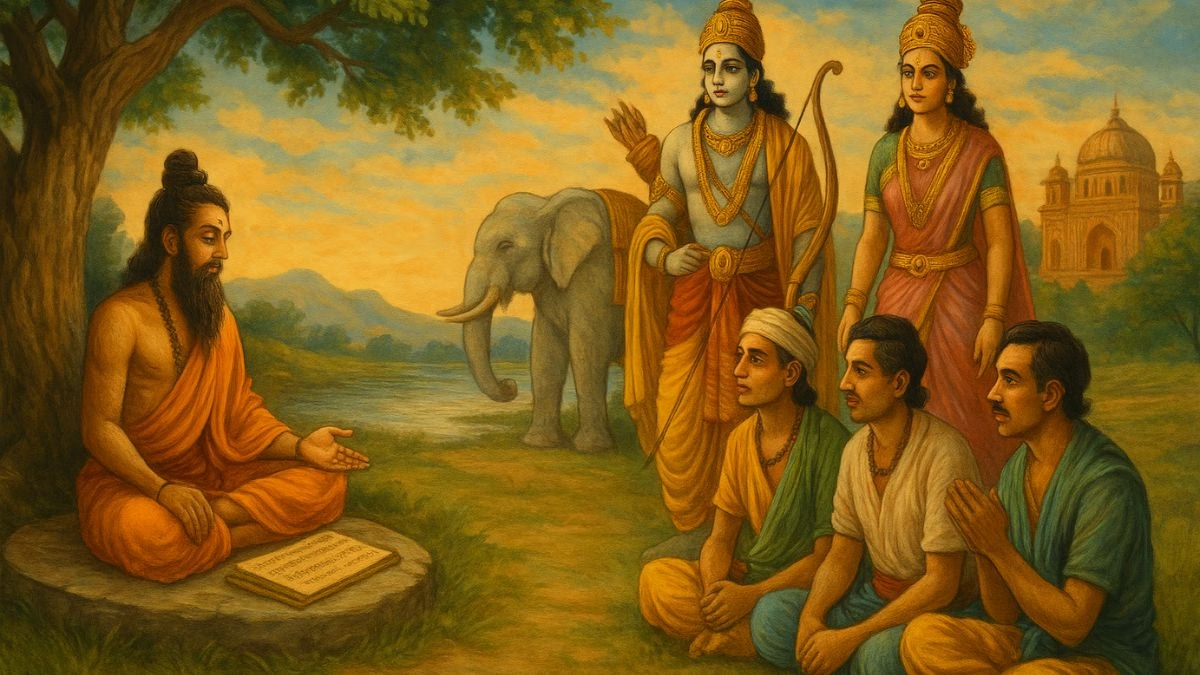

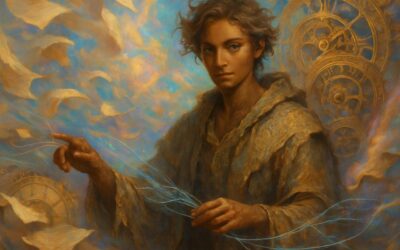
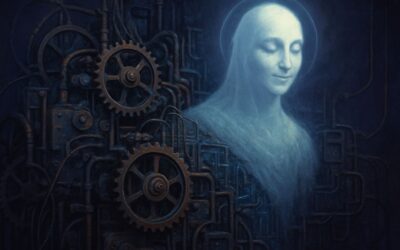




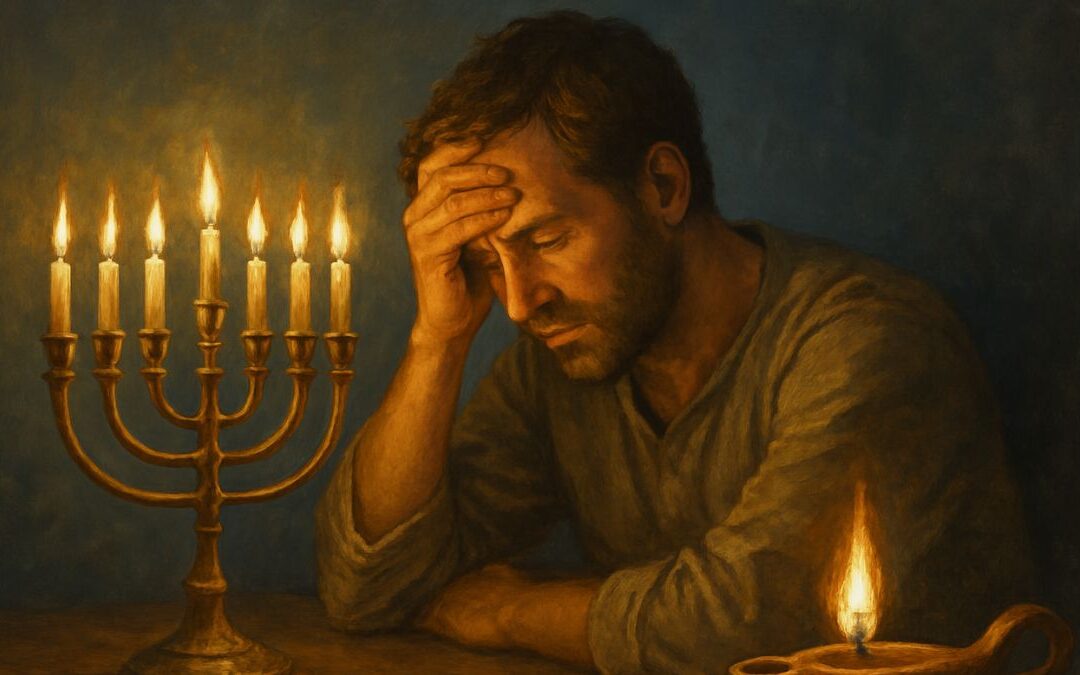
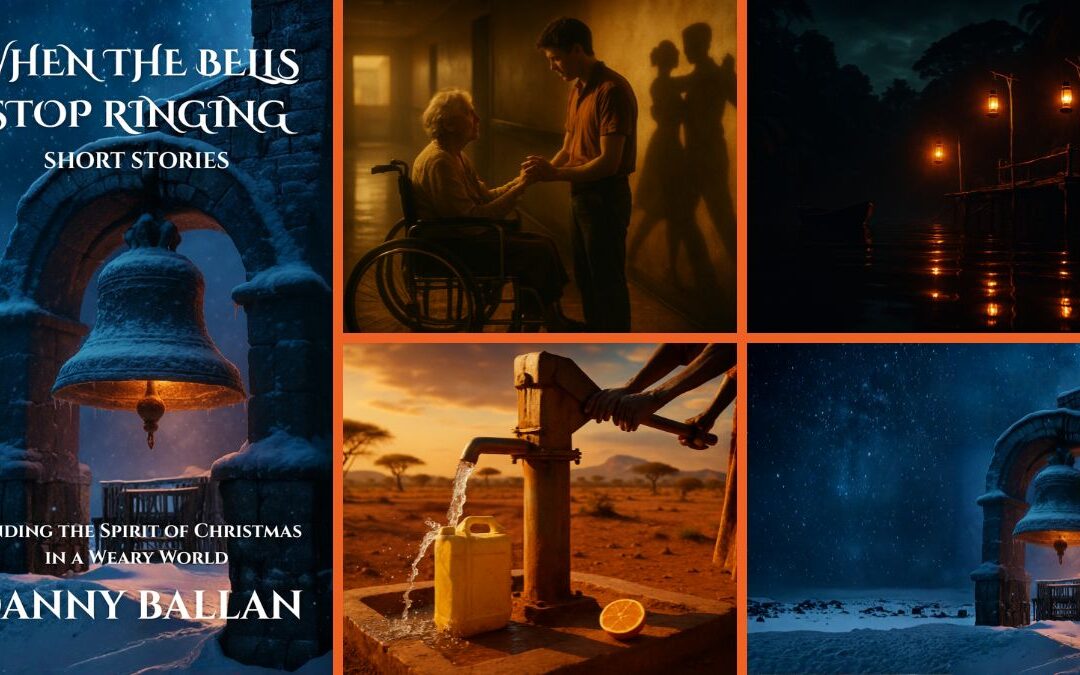
0 Comments